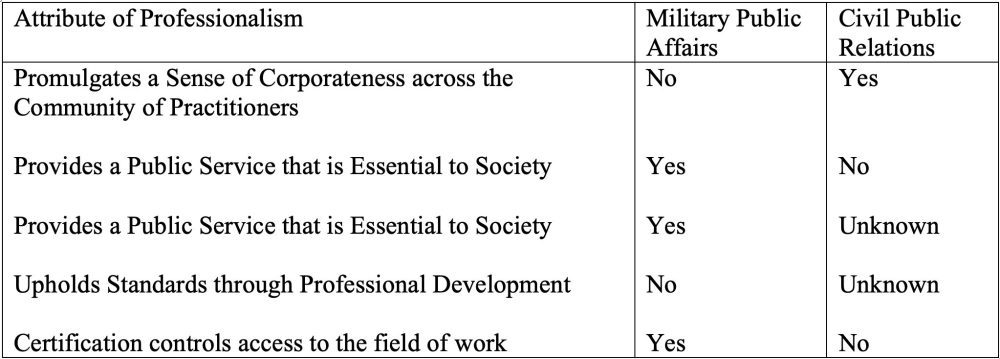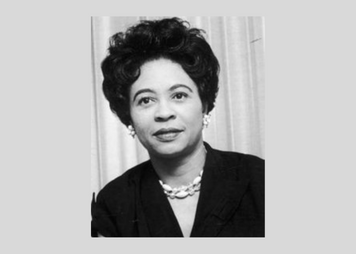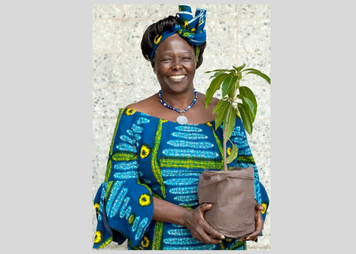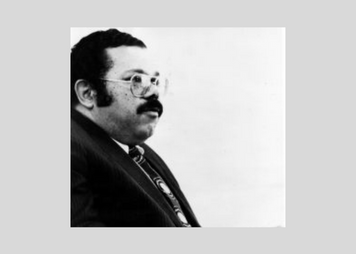
The Professional Angle: Are Organizational Communicators up to the Task?
 This blog is based on the original study in the Public Relations Journal.One of the things communicators desire is to bring expert skill, value, and insight to our clients. In my work as a military public affairs officer, more than once someone else in uniform said something to the effect of I know how to work a smartphone and take pictures. I could do your job. No doubt many of my colleagues who work as communicators in the civil world have heard similar, misinformed statements. When a time of crisis strikes, those same people look to their communicators for advice on how to navigate troubled waters. Why is that? When it comes to issues in life and business that really matter, we often look to those who possess unique expertise for help. Often, such people are referred to as professionals. But what does this term actually mean? What qualifications differentiate certain lines of work as “professions”? Are those of us who work in organizational or institutional communication considered to be “professionals” at what we do?Through a multi-method exploration using literature review and autoethnography, I defined and applied specific tests of professional standing to civil and military communications. I surveyed recent literature on the topic of military public affairs, civil public relations, military professionalism, and communication professionalism to identify the most accepted professional attributes and how military and civil communicators measure against them.I discovered the attributes most frequently associated with professions and organized them by 10 categories. The fields of public relations and military public affairs both meet two indicators:1.) Full-time, Non-Manual Occupation: work that does not require high levels of physical exertion and is usually performed in an office setting.2.) Operates according to a Body of Theory: communication work is grounded in unique knowledge specific to a specialty practice.Neither field of civil public relations, nor military public affairs met the attribute of being self-policing to a vocational code of ethics. Though both fields have established codes, they are not generally enforced on practitioners through formal means.The analysis was unable to determine whether civil and military communicators qualify under two of the identified attributes of professions.1.) Operates with a High Degree of Autonomy: professions enjoy a wide leeway of operation with minimal supervision from officials outside their respective areas of expertise.2.) Acknowledged by the Public as fulfilling the requirements of a Profession: professions must be granted this standing through a sort of social contract with the public.Results showed different answers for military public affairs and civil public relations on five criteria identified in this study:
This blog is based on the original study in the Public Relations Journal.One of the things communicators desire is to bring expert skill, value, and insight to our clients. In my work as a military public affairs officer, more than once someone else in uniform said something to the effect of I know how to work a smartphone and take pictures. I could do your job. No doubt many of my colleagues who work as communicators in the civil world have heard similar, misinformed statements. When a time of crisis strikes, those same people look to their communicators for advice on how to navigate troubled waters. Why is that? When it comes to issues in life and business that really matter, we often look to those who possess unique expertise for help. Often, such people are referred to as professionals. But what does this term actually mean? What qualifications differentiate certain lines of work as “professions”? Are those of us who work in organizational or institutional communication considered to be “professionals” at what we do?Through a multi-method exploration using literature review and autoethnography, I defined and applied specific tests of professional standing to civil and military communications. I surveyed recent literature on the topic of military public affairs, civil public relations, military professionalism, and communication professionalism to identify the most accepted professional attributes and how military and civil communicators measure against them.I discovered the attributes most frequently associated with professions and organized them by 10 categories. The fields of public relations and military public affairs both meet two indicators:1.) Full-time, Non-Manual Occupation: work that does not require high levels of physical exertion and is usually performed in an office setting.2.) Operates according to a Body of Theory: communication work is grounded in unique knowledge specific to a specialty practice.Neither field of civil public relations, nor military public affairs met the attribute of being self-policing to a vocational code of ethics. Though both fields have established codes, they are not generally enforced on practitioners through formal means.The analysis was unable to determine whether civil and military communicators qualify under two of the identified attributes of professions.1.) Operates with a High Degree of Autonomy: professions enjoy a wide leeway of operation with minimal supervision from officials outside their respective areas of expertise.2.) Acknowledged by the Public as fulfilling the requirements of a Profession: professions must be granted this standing through a sort of social contract with the public.Results showed different answers for military public affairs and civil public relations on five criteria identified in this study:
 This topic matters because those of us who work in communication on behalf of others can play a role in building or breaking societal trust. Societies without trust become societies that fail. This is not a topic of mere semantics, but of how practitioners set the culture, perception, and relevance of the work to which they commit a great percentage of lifetime and energy to accomplishing. Communicators hold the tools to fracture, or to build bridges between individual stakeholders, groups, and societies. Those who endeavor to serve society well through the application of their vocational talents are more likely to understand and appreciate the weight and responsibility of their role in representative society than those who do not. Let us be practitioners who take the field to the next level by seeking not only to work well, but to serve well.
This topic matters because those of us who work in communication on behalf of others can play a role in building or breaking societal trust. Societies without trust become societies that fail. This is not a topic of mere semantics, but of how practitioners set the culture, perception, and relevance of the work to which they commit a great percentage of lifetime and energy to accomplishing. Communicators hold the tools to fracture, or to build bridges between individual stakeholders, groups, and societies. Those who endeavor to serve society well through the application of their vocational talents are more likely to understand and appreciate the weight and responsibility of their role in representative society than those who do not. Let us be practitioners who take the field to the next level by seeking not only to work well, but to serve well.
 Chase Spears has served as a military public affairs officer for 20 years and is concluding his time in uniform as a public affairs training advisor. He is a Ph.D. candidate in at Kansas State University and teaches crisis communication as an adjunct professor for Spurgeon College in Kansas City, Missouri. You can connect with him at chase@chasespears.com, and on LinkedIn.The views expressed in this paper are those of the author and are not representative of the official views or policies of the U.S. Army, U.S. Defense Department, nor any other agency or entity public or private.
...
Chase Spears has served as a military public affairs officer for 20 years and is concluding his time in uniform as a public affairs training advisor. He is a Ph.D. candidate in at Kansas State University and teaches crisis communication as an adjunct professor for Spurgeon College in Kansas City, Missouri. You can connect with him at chase@chasespears.com, and on LinkedIn.The views expressed in this paper are those of the author and are not representative of the official views or policies of the U.S. Army, U.S. Defense Department, nor any other agency or entity public or private.
...



 Yeunjae Lee, Ph.D., Purdue University is an assistant professor in the Department of Strategic Communication at the University of Miami. Her main research interests include employee communication, internal issue/crisis management, and organizational diversity and justice.
...
Yeunjae Lee, Ph.D., Purdue University is an assistant professor in the Department of Strategic Communication at the University of Miami. Her main research interests include employee communication, internal issue/crisis management, and organizational diversity and justice.
... 


 Morning Consult examined brand trust across industries globally for 2022.A survey of 2,200 U.S. adults, 1,299 South Korean residents, and 1,000 residents each in Canada, China, France, Germany, India, Italy, Japan, and the U.K. was conducted April 8-14, 2022.Key Findings:1.) Household names with local roots helped boost consumer trust.— The No. 1 Most Trusted Brand in 6 of the 10 countries surveyed was established in that country.2.) Small businesses were well-trusted — for the most part.— Across North America and Europe, trust in small businesses was quite high, but there was a sizable trust gap in the Asian countries surveyed.3.) Good value for price and high-quality products/services were crucial for building trust.— International respondents ranked other elements, such as ethical business practices and good customer service, as less important.4.) Poor customer service was a primary driver in breaking trust.— Bad customer service experiences and deteriorating product quality were among the top reasons that global consumers lost trust in brands.Find the original report here.
...
Morning Consult examined brand trust across industries globally for 2022.A survey of 2,200 U.S. adults, 1,299 South Korean residents, and 1,000 residents each in Canada, China, France, Germany, India, Italy, Japan, and the U.K. was conducted April 8-14, 2022.Key Findings:1.) Household names with local roots helped boost consumer trust.— The No. 1 Most Trusted Brand in 6 of the 10 countries surveyed was established in that country.2.) Small businesses were well-trusted — for the most part.— Across North America and Europe, trust in small businesses was quite high, but there was a sizable trust gap in the Asian countries surveyed.3.) Good value for price and high-quality products/services were crucial for building trust.— International respondents ranked other elements, such as ethical business practices and good customer service, as less important.4.) Poor customer service was a primary driver in breaking trust.— Bad customer service experiences and deteriorating product quality were among the top reasons that global consumers lost trust in brands.Find the original report here.
... 


 Deloitte examined the issues employees are facing today and how they contribute value to the workplace.A survey of 10,000 business and HR leaders was conducted as well as interviews with executives.Key Findings:1.) Workers that said they co-created with their employees were 1.8 times more likely to have a highly engaged workforce, 2x more likely to be innovative, and 1.6 times more likely than their peers to anticipate and respond to change effectively.2.) 19% of organizations said they’re very ready for employee data ownership.— Beyond ownership alone, conversations about what is workforce data, the transparency of that data, and the mutual benefits of data-driven insights are on the rise as data is becoming a new “currency.”3.) Worker agency might have previously been seen as a threat, but leading organizations are finding ways to leverage worker motivation and cocreation to drive mutual and elevated benefits.4.) Many organizations are still stuck in old patterns of talent access and management because they’re not giving workers a say in where, how, and for whom they work.Organizations that adapt their strategies and practices to fit the real-world talent pool will gain access to skills and experiences to accelerate growth, innovation, and agility.Find the original report here.
...
Deloitte examined the issues employees are facing today and how they contribute value to the workplace.A survey of 10,000 business and HR leaders was conducted as well as interviews with executives.Key Findings:1.) Workers that said they co-created with their employees were 1.8 times more likely to have a highly engaged workforce, 2x more likely to be innovative, and 1.6 times more likely than their peers to anticipate and respond to change effectively.2.) 19% of organizations said they’re very ready for employee data ownership.— Beyond ownership alone, conversations about what is workforce data, the transparency of that data, and the mutual benefits of data-driven insights are on the rise as data is becoming a new “currency.”3.) Worker agency might have previously been seen as a threat, but leading organizations are finding ways to leverage worker motivation and cocreation to drive mutual and elevated benefits.4.) Many organizations are still stuck in old patterns of talent access and management because they’re not giving workers a say in where, how, and for whom they work.Organizations that adapt their strategies and practices to fit the real-world talent pool will gain access to skills and experiences to accelerate growth, innovation, and agility.Find the original report here.
...